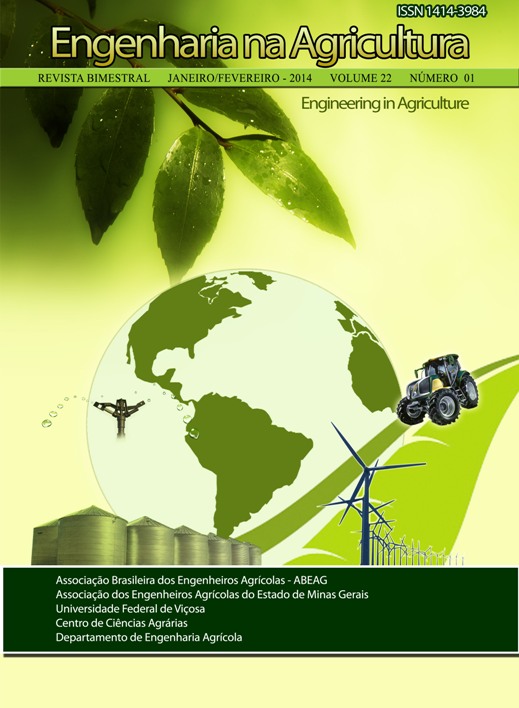REDUÇÃO DA VIABILIDADE DE OVOS DE HELMINTOS EM LODO DE ESGOTO DOMÉSTICO CALEADO - DOI: 10.13083/1414-3984.v22n01a05
DOI:
https://doi.org/10.13083/reveng.v22i1.423Palavras-chave:
caleação do lodo, higienização, micro-organismos patogênicosResumo
O aproveitamento agrícola do lodo de esgoto apresenta-se como uma alternativa viável para sua disposição final. Entretanto, para sua reutilização e destinação correta, é necessária sua estabilização. Os objetivos com a condução deste trabalho foram: quantificar a concentração de ovos de helmintos viáveis no lodo; avaliar a sobrevivência desses ovos no lodo submetido a diferentes tempos de caleação e classificar o lodo, segundo a Resolução CONAMA nº 375, no que se refere a uso agrícola. O experimento foi constituído por três tratamentos e quatro repetições. Os tratamentos foram: caleação do lodo de esgoto com dose de cal necessária a manutenção do pH acima de 12, por 72 h; caleação do lodo de esgoto com dose de cal necessária a manutenção do pH acima de 12, por 2 h, e lodo de esgoto sem adição de cal. Para comparar a concentração de ovos de helmintos entre os tratamentos foram ajustados modelos lineares generalizados, utilizando distribuição de erro Poisson corrigida para Quase-Poisson, e submetidos ao teste F. A caleação do lodo por 2 e 72 h promoveu a inativação de 93,75 e 99,32% dos ovos de helmintos, sendo o lodo, após o tratamento, classificado como Classe B e Classe A, respectivamente. Do ponto de vista sanitário, o tempo de 72 h forneceu um lodo mais seguro para uso agrícola.Downloads
Downloads
Publicado
Como Citar
Edição
Seção
Licença
Autores que publicam nesta revista concordam com os seguintes termos:
O(s) autor(es) autoriza(m) a publicação do texto na da revista;
O(s) autor(es) garantem que a contribuição é original e inédita e que não está em processo de avaliação em outra(s) revista(s);
A revista não se responsabiliza pelas opiniões, ideias e conceitos emitidos nos textos, por serem de inteira responsabilidade de seu(s) autor(es);
É reservado aos editores o direito de proceder a ajustes textuais e de adequação às normas da publicação.
A partir da submissão, o autor estará cedendo integralmente seus direitos patrimoniais da obra à publicação, permanecendo detentor de seus direitos morais (autoria e identificação na obra) e de acordo com a Licença Creative Commons, CC BY-NC.








 Esta obra está licenciada com uma Licença
Esta obra está licenciada com uma Licença 